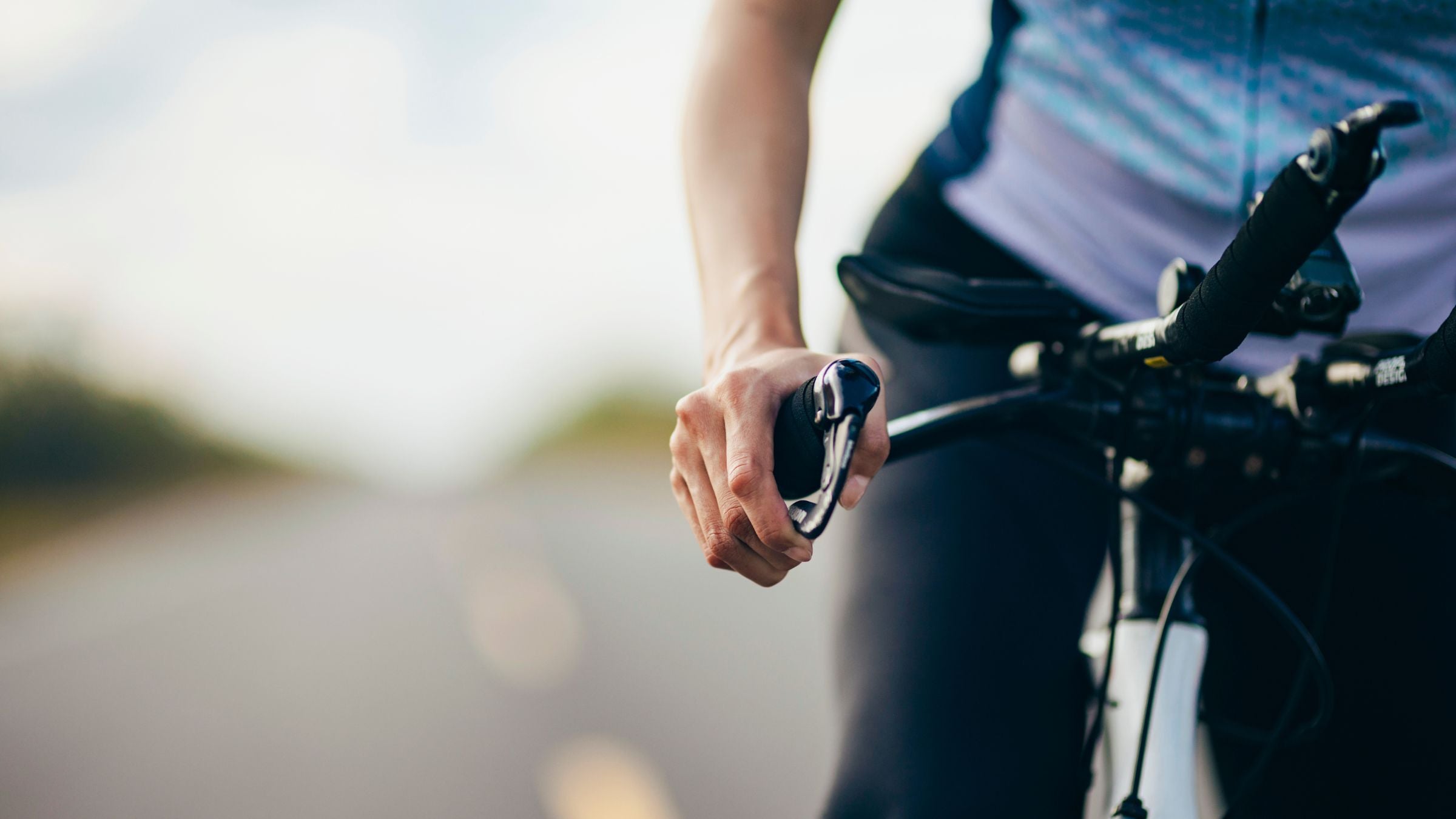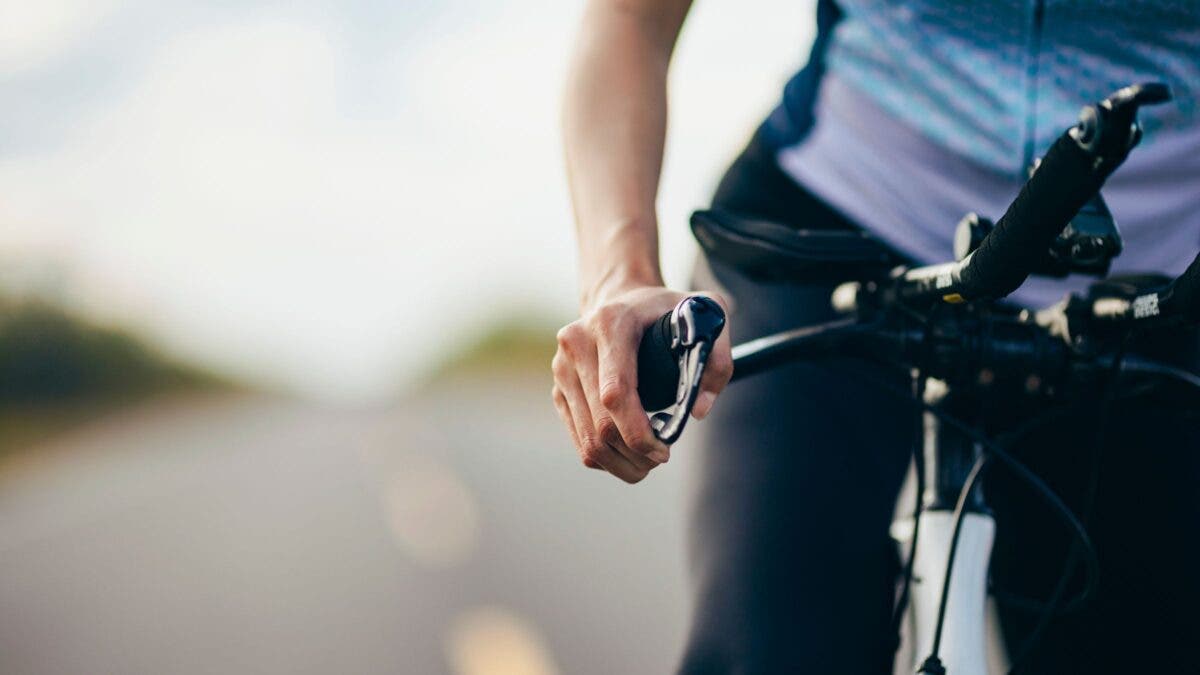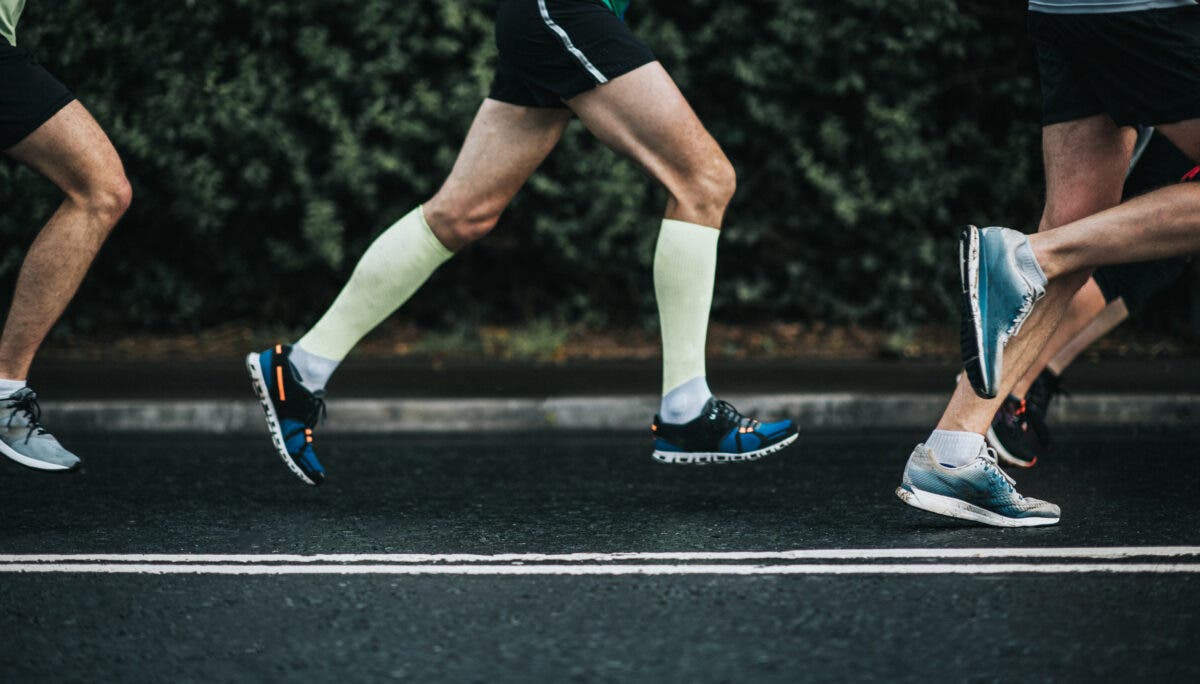Why Your Fingers Go Numb on the Bike (And What To Do About It)

Fingers going numb when you ride? It's a really common experience for triathletes and cyclists. (Photo: Getty Images)
Ever lost feeling in your fingers during a ride, had a numb foot during a long run, or felt pain in the brow after a swim? Nerve entrapment syndromes are the culprit – and they’re really common in triathletes.
What are nerve entrapment syndromes?
Nerves are very sophisticated anatomical structures in our body. We have both sensitive and motor nerves. They often run alongside blood vessels and can also be located inside “tunnels” or “canals” composed of muscle and bone (osteofibrous tunnels).
When pressure is constantly applied to a particular anatomical region – say, when you’re resting your hands on your handlebars during a three-hour bike ride, a nerve entrapment syndrome occurs.
When surrounding tissues create increased pressure on a nerve and blood flow dynamics are altered, creating the numbness and tingling you feel. The symptoms can be quite stressful, painful, and can ultimately cause patients to abandon recreational and sport activities, let alone affect their overall quality of life and everyday activities.
But with a bit of knowledge, triathletes can adjust their movement patterns to avoid these nerve entrapment syndromes.
Causes of nerve entrapment syndromes
There are several systemic conditions implicated in the development of nerve entrapment syndromes, including diabetes, autoimmune diseases, and thyroid disease, though these are not the only causes. Some factors put individuals more at risk, such as swelling, edema, and prolonged or repetitive activities, such as hammering.
So why would an otherwise healthy individual – someone who is active, like a triathlete – develop this clinical condition? The answer is that when training, we can unconsciously create an external force that causes pressure over a canal or tunnel where a nerve is found.
Have you ever experienced numb fingers after a ride? Have you ever felt numb feet after a long run or after using a brand-new pair of shoes? Have you ever felt frontal and “brow” pain after a swim? The cause may be a nerve entrapment syndrome. Common signs and symptoms include sensory disturbances, motor dysfunction, and pain, which might take on one or more of the following forms:
- Localized pain, or pain you can pinpoint to a specific area of the body
- Referred pain, or diffuse pain in a region
- Numbness
- A burning sensation, tingling, a feeling of “pins and needles,” or “electrical shocks”
Fear not – this condition usually isn’t permanent. Signs and symptoms are usually relieved after cessation of the activity (and elimination of the conditions creating the nerve compression), meaning the nerve entrapment syndrome is acute and transient. However, it’s important to take measures to prevent it from coming back, or from evolving into a chronic condition that may actually need medical treatment.
RELATED: An Injury Guide For Triathletes
Why you get headaches and forehead numbness from swimming

Headache during or after swimming may occur at the forehead or brow area. Some swimmers may experience actual acute pain or numbness. This is due to direct compression on the territory of the supraorbital and supratrochlear nerves. The medical condition is called supraorbital neuralgia, or supraorbital notch pain.
Probable cause:
Excessively tightening the swimming goggles. A tight seal is important, but excessive force can create constriction of the eyes and the nerves in the forehead and brow area.
Solution:
Symptoms are usually temporary, so removing the goggles will often solve the problem. However, some people may continue to experience a headache during the first minutes or hours after a swim workout. If that’s the case for you, try loosening your goggle straps a bit, or even consider trying a different style or model – sometimes the main socket and rim of the goggles can create excessive pressure directly over the brows, or the supraorbital notch, where the nerves emerge.
Other causes:
If adjusting your goggles doesn’t remove your headaches after swimming, consult your doctor about other causes, which may include chronic migraine, cluster headaches, or supraorbital rim syndrome.
RELATED: You’re Not Crazy—Exercise-Induced Headaches Are a Real Thing
Why your fingers go numb when riding a bike

If you’re experiencing pain, numbness, and tingling in the wrist, hand, palm, or fingers when riding a bike, nerve compression syndromes are likely to blame. Prolonged cycling involves sustained compression on the palm of the hand. Certain wrist positions – for example, riding upright with the hands near the brakes of a tri bike or on the hoods of a road bike – can create compression on the ulnar, median, and radial nerves of the hand.
Probable causes:
Improper bike fit, with the handlebars too low and too distant. An improper bike fit can predispose to excessive compression on the ulnar and median nerves, causing wrist or palm pain, finger numbness.
Another cause could be not using proper gloves. There are some cyclists and triathletes who use “all-purpose gloves” – for example, using the same pair for weightlifting as they do for riding, or putting on their running gloves to ride in cold weather. However, we ought to remember that cycling gloves are purposely designed for that activity, with special padding in certain areas to protect against compression of the nerve.
Solution:
Get a proper bike fit. A consultation with a knowledgeable bike fitter is not just for elite or pro athletes, and it is an important investment in your health and enjoyment of the sport. Improper position during cycling is related to pain in the knees, back, hip, and nerve entrapment syndromes in both the upper and lower limbs.
Additionally, it’s important to change hand positions every 15-20 minutes when riding, even if you are not feeling any numbness or tingling. The more you move, the less likely you will be to experience nerve entrapment syndromes.
Other causes:
Carpal tunnel syndrome, Guyon canal syndrome, or mixed nerve neuropathy may be at play. In fact, some cyclists start out with nerve entrapment syndromes that ultimately develop into one of these complications, which do require medical and/or surgical treatment. This is why prevention and early identification are crucial.
RELATED: The Best Triathlon Bike Fitters in the United States
Why your foot goes numb when running

Most nerve entrapment symptoms during running occur in the lower limb, especially in the hip region. The main affected nerves are the sciatic, pudendal, femoral, tibial, obturator, and the lateral femoral cutaneous.
Probable cause:
Most likely, numbness or tingling in the foot when running is caused by tight running shoes or too-tight laces. However, there are several clinical conditions that are related to nerve entrapment syndromes in the hip and legs, such as tarsal tunnel syndrome, femoral nerve neuropathy, and sciatic compression.
Solution:
If using brand-new running shoes, try them out for just a few miles before wearing them on a long run. Get a proper gait analysis and foot pressure mapping performed by a healthcare facility. A biomechanical analysis of your stride and gait can determine if an athlete needs special or custom orthotic insoles. Most of the time, this can resolve pain and other symptoms related to numbness when running.
Other causes:
If pain persists or if it is present in other areas, such as the hip, glutes, knees, or soles of the feet, consult with a doctor. Possible causes of pain and numbness in the foot when running might include Morton’s neuroma, plantar fasciitis, tarsal tunnel syndrome, or lower limb mixed nerve neuropathies.
RELATED: How to Pick the Right Running Shoe Today
Should I be worried about numbness or tingling in my fingers when riding?
Don’t panic! Typically, nerve entrapment syndromes go away when you cease the activity causing the entrapment. However, you should consult with your doctor if you experience any of the following:
- Signs and symptoms prevail during the day, even during easy tasks such as hair grooming, makeup application, or driving.
- Your sleep is disturbed due to your symptoms (for instance, waking up during the night because of intense pain in the hand or fingers).
- If you have a medical condition that can predispose to a nerve entrapment syndrome (such as thyroid disease, diabetes, or autoimmune disease) and you are experiencing worsening symptoms when performing exercise (such as cycling or running).
There are some cases that do require medical treatment, and in some clinical conditions, nerve decompression surgery is advised to alleviate chronic pressure on a given nerve. However, most cases will go away with early identification and taking the steps outlined above to alleviate pressure on your nerves.